2022 Asia-Pacific Ministerial Conference on Disaster Risk Reduction
Convened by the UN Office for Disaster Risk Reduction, the APMCDRR is the main regional platform in the Asia-Pacific for promoting coordination and cooperation on disaster risk reduction and the implementation of the Sendai Framework for Disaster Risk Reduction.
The APMCDRR was organised under the theme ‘From Crisis to Resilience: Transforming the Asia-Pacific Region’s future through disaster risk reduction’. As the Asia-Pacific is the most disaster-prone region in the world, the conference provided an important opportunity to review efforts to prevent new and reduce existing risks, and for countries and organisations to make actionable commitments against the Sendai Framework for Disaster Risk Reduction 2015-2030.
At the heart of the APMCDRR was the Marketplace, where delegates could meet, connect and collaborate with one another. With up to 60 exhibitors, multiple meeting hub, an Ignite Stage and an array of displays, it was a hive of activity.

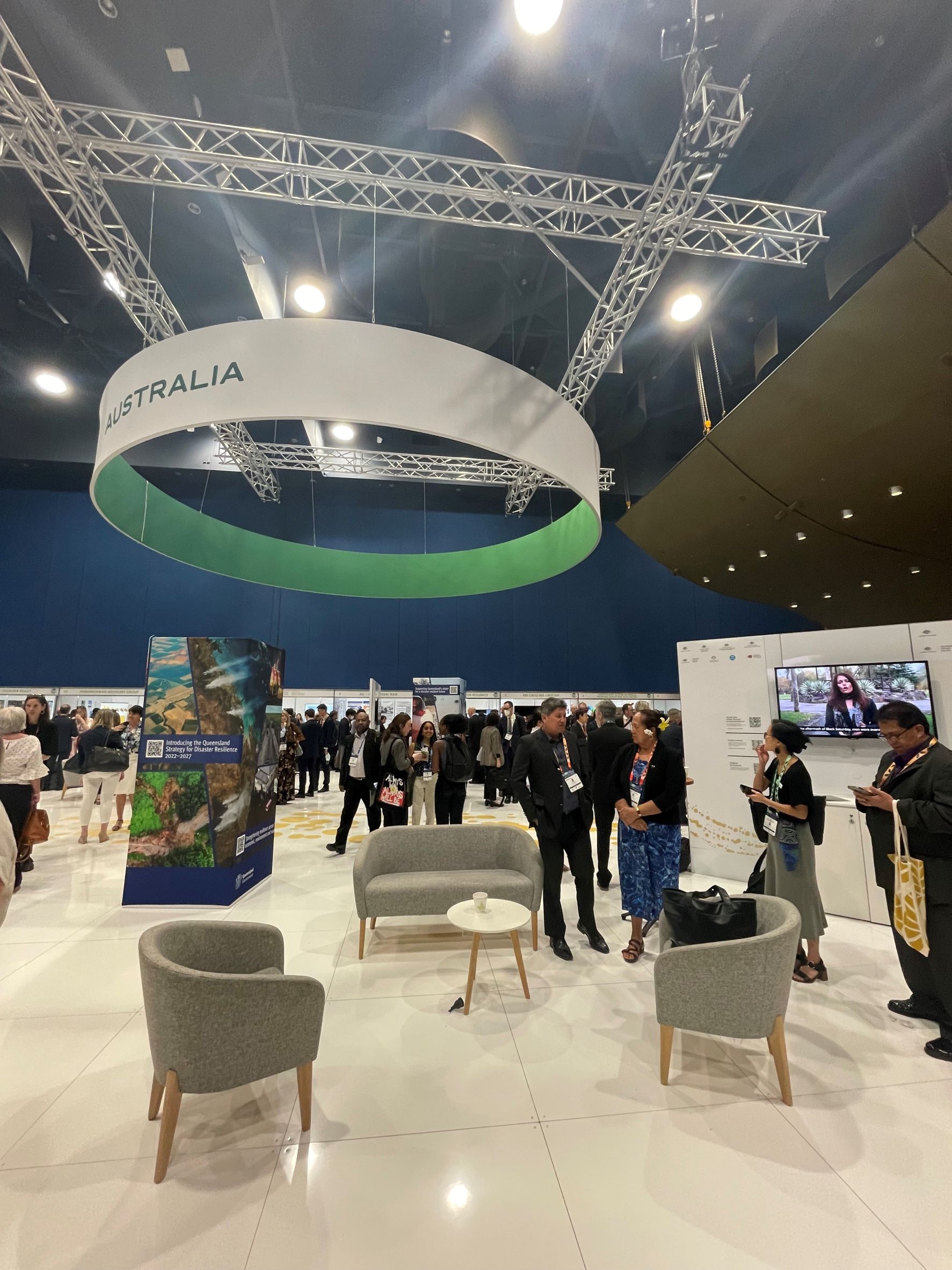
Image: Australia Host Stand
The Australia Host Stand in the Marketplace brought together cross-sectoral stakeholders to showcase Australia’s national disaster risk reduction efforts, including the National Emergency Management Agency; Department of Climate Change, Energy the Environment and Water; Department of Foreign Affairs and Trade; Australian Climate Service, CSIRO, Natural Hazards Research Australia; and AIDR.
The Australia stand hosted presentations throughout the conference, some of which included the Resilience Valuation Initiative, Firesticks, Australian Red Cross, National Bushfire Intelligence Capability and Gingin District High School. Taken as a whole, the individual presentations provided a great overview of the many actors and initiatives involved in disaster risk reduction across Australia.
The Ignite Stage program in the Marketplace linked to the three pillars of the AMCDRR:
- Risk informed investment and scaling up financing for disaster risk reduction.
- Making infrastructure and systems resilient.
- Community knows best: Reducing disaster risk for all.
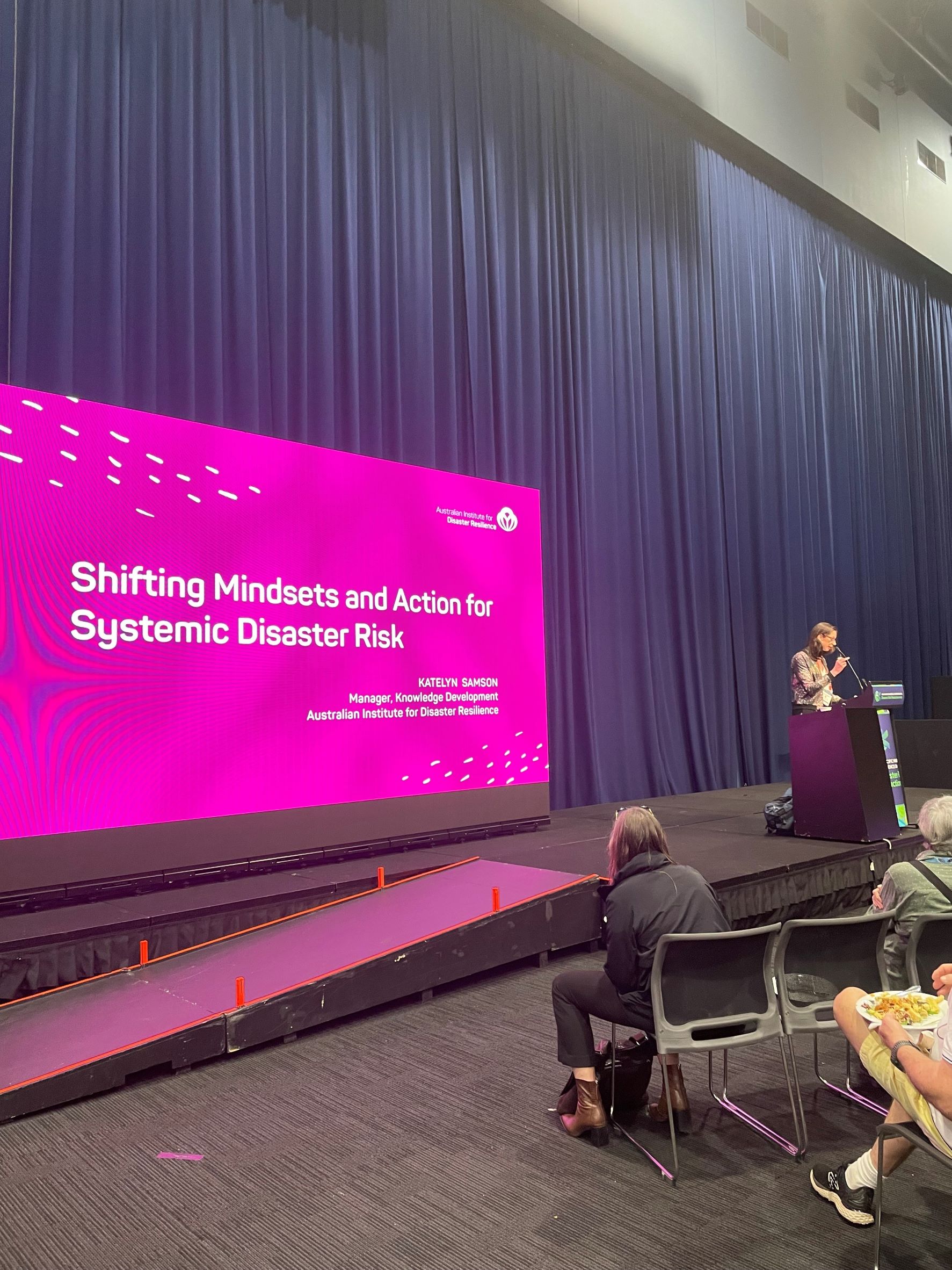
Image: AFAC Deputy Director Risk and Resilience, Katelyn Samson, presenting the AIDR Systemic Disaster Risk Handbook on the Ignite Stage.
The APMCDRR also featured a Pacific Pavilion, which was a space for learning and sharing Pacific-led resilience actions. Hosted by the Pacific Resilience Partnership, It was a collaborative learning and engagement space that showcased the scientific and technical innovations that have been created reduce disaster risk in the Pacific. The pavilion led learning discussion on Pacific issues that included women, youth, government partners, scientists, and cultural knowledge holders. It had an interactive science to action space, and cultural sessions including storytelling and performances.
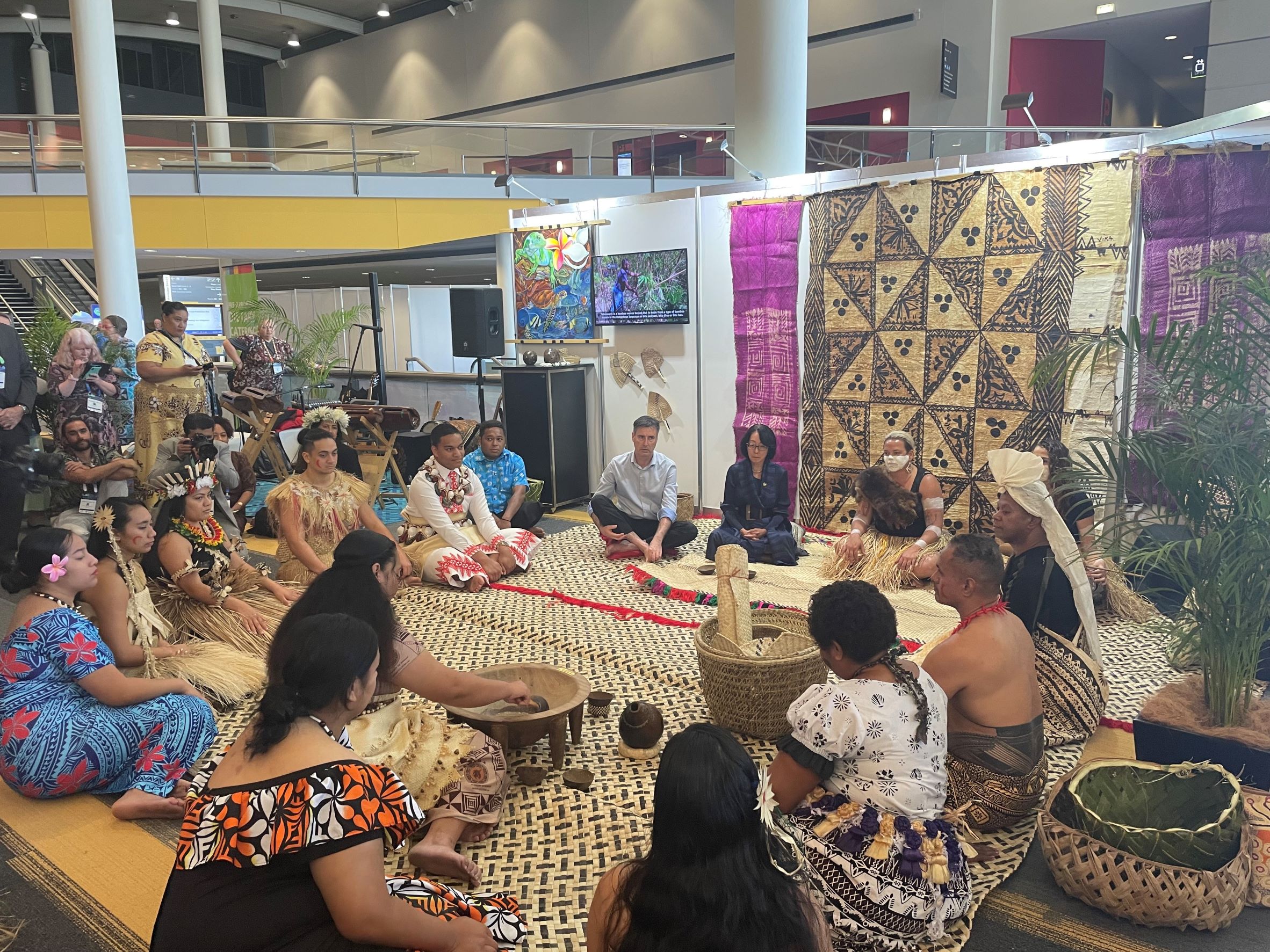
Image: A kava ceremony at the Pacific Pavilion
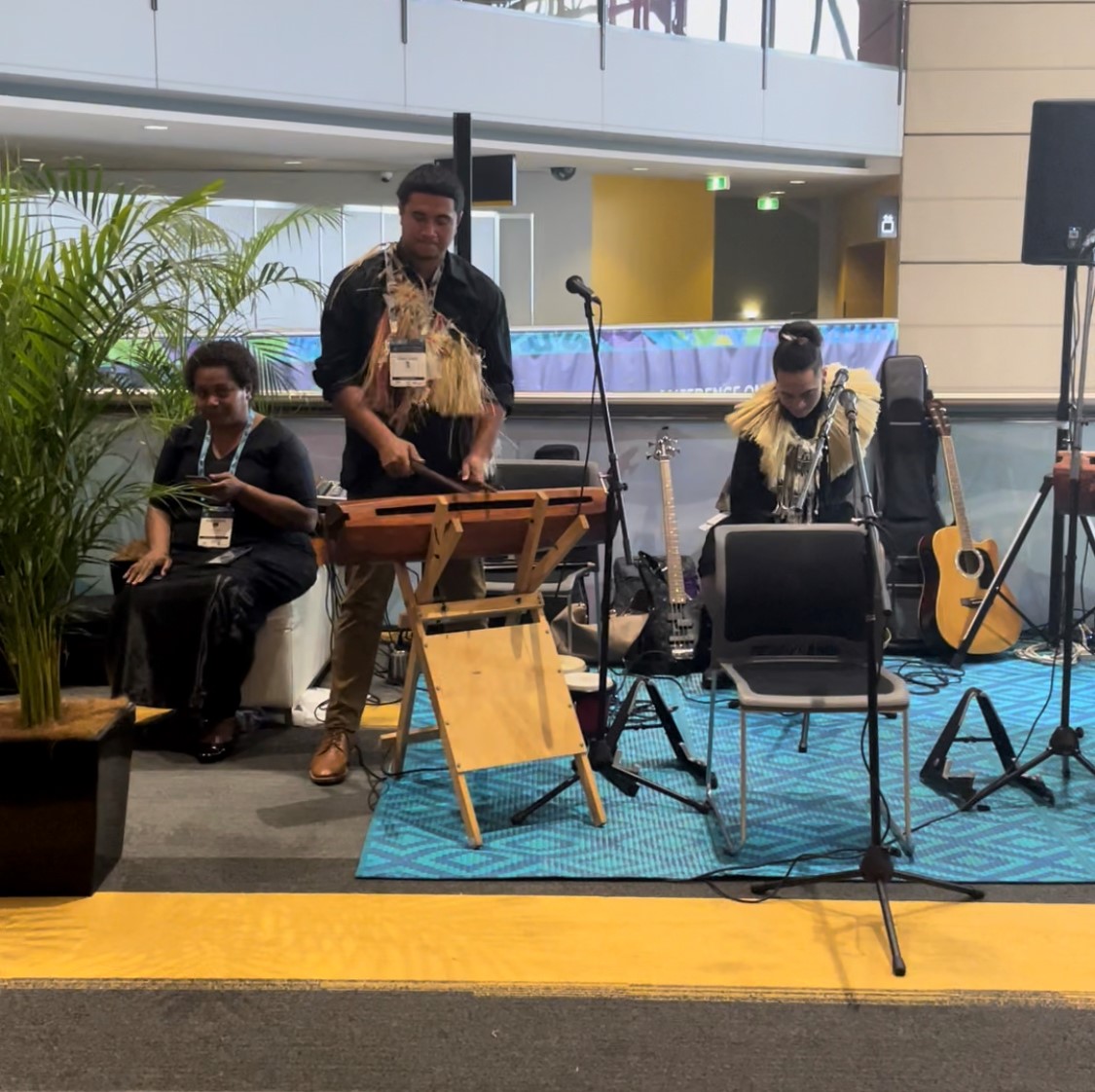
Image: One of the cultural performances at the Pacific Pavilion.
The APMCDRR included a jam-packed program of plenary sessions, presentations, panels and learning labs, with each day of the program aligning with one of the conference pillars. Each session included a diverse range of presenters, including government officials, practitioners, researchers and community leaders from across the Asia-Pacific. Over the three days, the conference highlighted the need for diverse voices and inclusive policies across the spectrum of disaster risk reduction.
On day one, the opening plenary session ‘Risk Informed Investments and Scaling Up Financing for Disaster Risk Reduction’ highlighted the need for a mindset shift and investment in what will provide benefits into the future, that than just the here and now. Risk informed investments require a shift to future thinking, but they also require the private sector to be make accountable, and small businesses to be better enabled by government.
The ’Governance and Stakeholder Engagement for Resilient Infrastructure Services’ working session asked the question: how do we incentivise people to take action? The three-part approach to resilient infrastructure adopted by the Philippines was used as an example:
- Analyse the hazards - using data and research.
- Communicate the risks to the community - establishing community buy-in.
- Implementation - including stakeholders in monitoring and evaluation.
On day two, the ‘Adaptive Social Protection’ working session explored case studies of data-driven economic support during disaster in the Philippines, Indonesia and Fiji. This session showed how anticipatory action using data not only leads to better economic outcomes, but more resilient communities in the long term.
The ‘Sharing and Growing – the Importance of Aboriginal and Torres Strait Islander Knowledge in DRR and Building Resilience’ learning lab explored the actions that local councils took to prepare their communities for disaster, using their experience of Tropical Cyclone Trevor as an example. This session highlighted the importance of community ties and culture, and that these are protective factors in disaster risk reduction.
The ’Climate Risk and Early Warning Systems for Pacific Island Nations: Droughts, Tropical Cyclones and Floods’ event discussed the importance of community education for early warning systems. It was highlighted that warning systems need to be trusted by the community, which also means that they need to be accessible for all. Language is key to the delivery of warning systems, and it also needs to be accessible for all.
The day three plenary session was on the topic ‘Community Knows Best: Reducing Disaster Risk for All’. The panellists highlighted the discriminatory nature of disasters, and the multiple layers of identities that people experience and have, making them more vulnerable to the effects of disasters. The session explored the long time it takes to reduce the risk that has already been built, while changing our normative frameworks to prevent risks from being created into the future.
The spotlight session ‘Elevating Local Voice and Leadership for Better Response and Resilience’ discussed the need for leaders rise from the community into decision making roles. Local action is crucial to disaster risk reduction and comes from seeking out and assisting local voices to have their thoughts heard in decision making forums.
Youth engagement was a key theme across the conference program, with a number of Asia-Pacific nations sharing how they are implementing ‘whole of nation’ approaches to school-based disaster risk reduction programs, supported by the Comprehensive School Safety Framework. The ‘Recipes for Success to Scale Up Comprehensive School Safety across the Asia-Pacific’ included case studies from Indonesia’s national assessment of school risk to hazards and disasters; and Pakistan’s staged approach to increase public awareness and support mentoring and training for teachers and principals.
There was a youth delegation present at the APMCDRR, with students from southern Queensland and the Northern Rivers region in New South Wales able to meet with Senator Sheldon to have their say on youth engagement in disaster risk reduction.
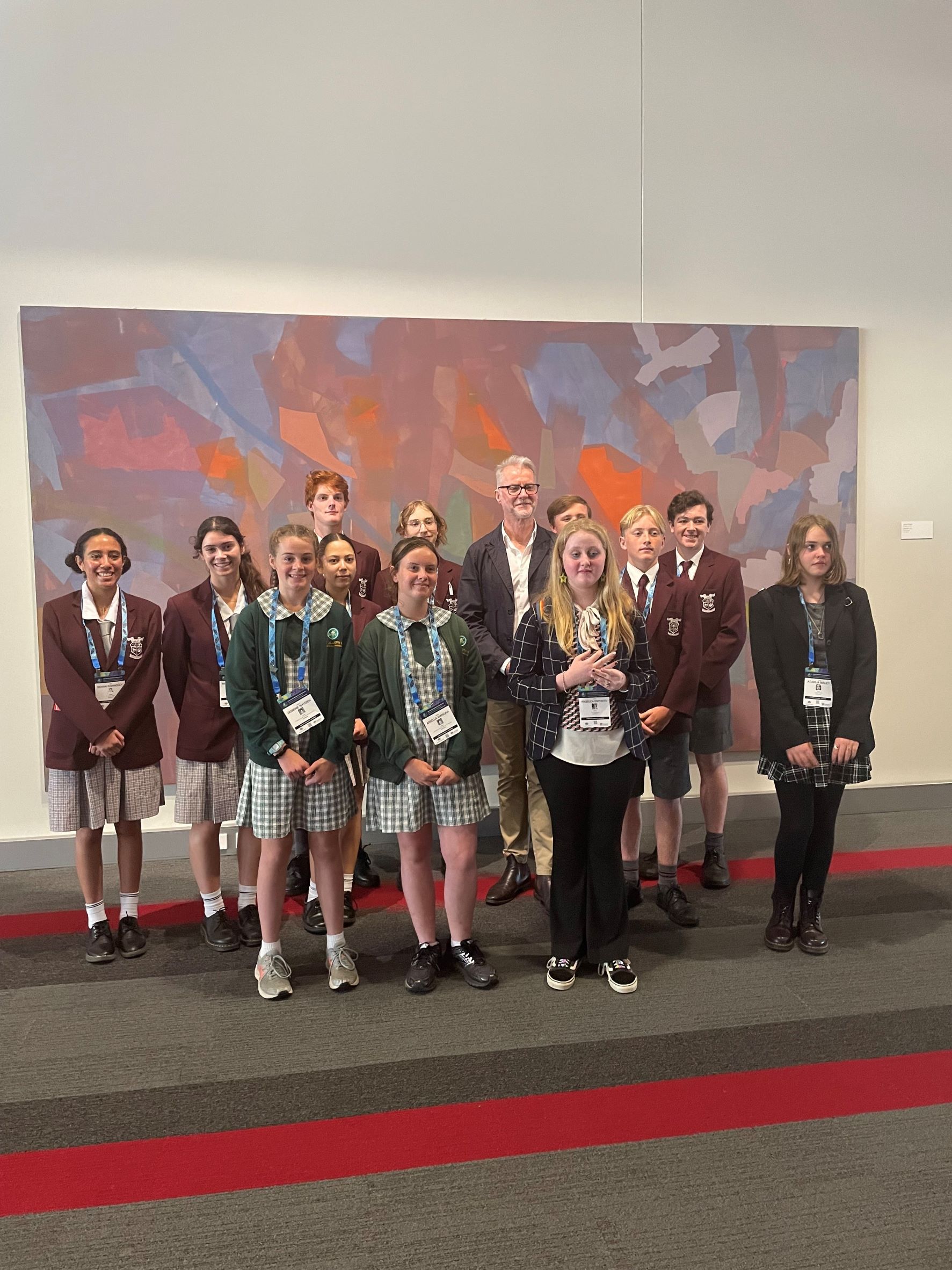
Image: The youth delegation with Senator Sheldon.
The APMCDRR took place during the midterm review of the Sendai Framework for Disaster Risk Reduction 2015-2030, providing an opportunity to assess where action must be accelerated. At the close of the conference the Co-chairs released a statement that captures their key takeaways from the event. Read it here.
A report summarising the key insights emerging from the sessions will be delivered in the coming weeks and will form a critical regional input for the Sendai Framework Midterm Review.


